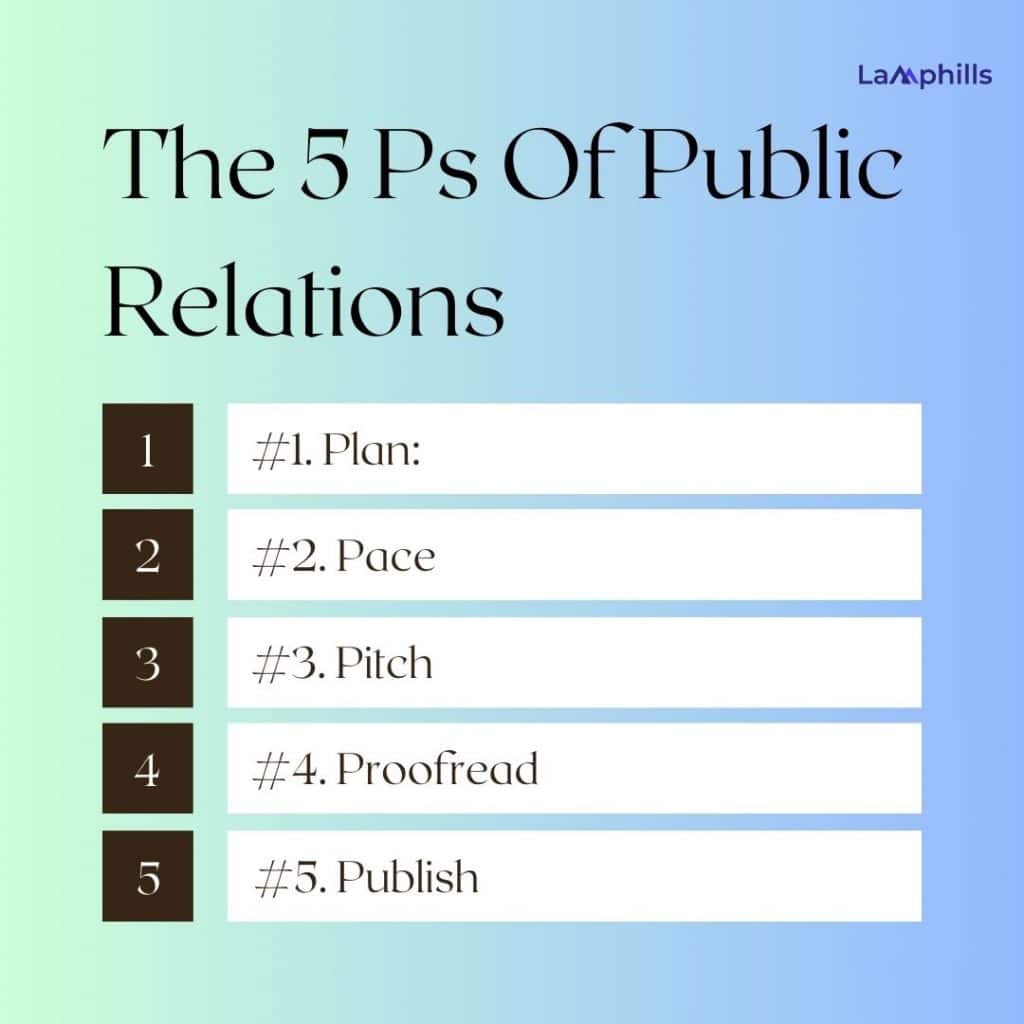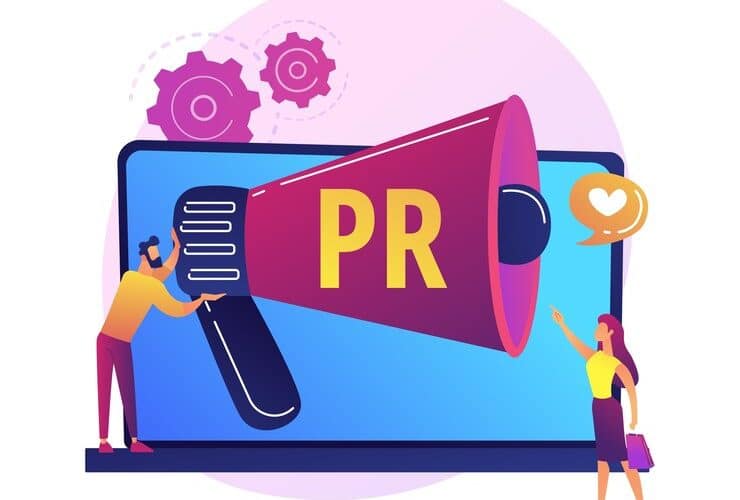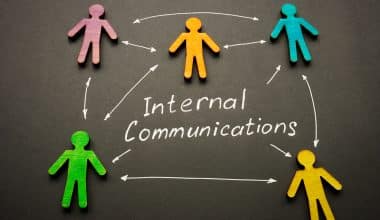Public relations tools are essential for professionals in public relations. They open up new doors, improve efficiency, and cut down on time spent on public relations tasks.
It is important to have knowledge of the best PR tools that can help your business before utilizing PR tools. In this post, I will show you 15 public relations tools you might use in your company.
Key Points
- Public relations tools assist companies in connecting and communicating with investors, customers, and staff, as well as tracking the success of their PR strategies.
- Effective management and oversight of public relations initiatives require the use of PR tools.
- Cision, Canva, Hootsuite, Mention, and Google Analytics are a few of the well-known PR tools.
- Public relations tools help with crisis management, reputation building for brands, and gauging the effectiveness of PR campaigns.
- These tools support target audience engagement, data analysis, and media coverage monitoring.
What are Public Relations Tools?
Public relations tools are resources that assist companies in connecting and communicating with customers, investors, and staff, as well as tracking the success of their public relations strategies. These technologies help businesses market their goods and services and have an impact on their reputation and general visibility. They are also used to handle press releases and collaborations. By using these tools, your business may draw in more clients and boost its overall revenue.
Read Also: PUBLIC RELATIONS MANAGER: Definition, Duties, Salary & Requirements
Functions of Public Relations Tools
Public relations tools can help you:
- Safeguard the reputation of your brand.
- Receive alerts when industry reporters, analysts, influencers, rivals, and other writers discuss your company.
- Make contact with influential people on social media.
- Find fresh media channels.
- Avoid a PR disaster.
- Perform market analysis
- Determine the potential for new media.
- Obtain hard statistics regarding your brand’s web presence.
- Boost your interactions with the media.
Top 15 Public Relations Tools That Work
As a PR specialist, you will require a collection of effective PR tools to assist you in reaching your target audience, handling media relations, and monitoring campaign efficacy. So what are the best PR tools? These are the top 15 public relations tools that will help you advance your PR campaigns:
#1. Cision
Cision is an all-in-one PR tool that assists you in tracking media coverage, identifying and reaching out to influencers, and calculating the effectiveness of your PR initiatives. It’s a really useful tool for me to identify and establish connections with important industry leaders. With the help of the platform’s database of influencers and media contacts, you may target particular people or businesses that complement the messaging and branding of your clients.
Furthermore, it allows you to track media coverage. That entails giving clients and campaign-related mentions, publications, and social media posts real-time updates. Therefore, you can keep an eye on rival activity, stay up-to-date on industry trends, and evaluate the effectiveness of your PR campaigns thanks to this service.
#2. Muck Rack
Muck Rack is a PR tool and media database that helps you locate writers, bloggers, and influencers who cover your business and efficiently manage your media relationships. With this tool, you can quickly find influential people, bloggers, and journalists who are covering my industry’s themes via Muck Rack. It also cultivates and oversees media relationships, which results in heightened media attention and audience involvement.
Furthermore, it streamlines and saves time thanks to the platform’s extensive database and user-friendly interface. It also provides insightful information about media trends and potential story angles. To put it briefly, experts recommend using Muck Rack as it aids PR objectives and improves media relations efforts.
#3. PR Newswire
PR Newswire is a top press release distribution service that assists you in getting your news and announcements in front of bloggers, journalists, and other media outlets. It is an easy-to-use tool that makes press release submission and distribution simple. The solution provides comprehensive statistics and analytics to monitor press release performance. By doing so, users are better able to comprehend the impact and reach of their announcements.
PR Newswire provides both free and paid solutions, just like several other PR tools. Basic distribution to a restricted number of media outlets or websites is usually included in the free option. However, the paid choices provide a bigger network of journalists, bloggers, and media outlets with more widespread exposure. With all of these, PR Newswire makes your news more visible.
#4. Google Analytics
Google Analytics is an effective, free tool used by public relations specialists to track and evaluate user behavior and website traffic. Users can obtain important insights into how visitors engage with their content by integrating Google Analytics with their website. This information is essential for assessing the effectiveness of PR initiatives.
Furthermore, it offers in-depth reports on a range of metrics, such as page views, session duration, bounce rate, and traffic sources, which PR pros may use to discover high-performing content, determine which campaigns generate the most traffic, and adjust their strategy as necessary.
#5. HARO (Help A Reporter Out)
HARO, also known as Help a Reporter Out, is comparable to a friend who is there for you no matter what—only in this case, it’s for journalists and companies. This fantastic business exists to fill the void left by professionals eager to market their brand and journalists searching for knowledgeable sources. What’s the best thing, then? It’s totally free!
You have a plethora of opportunities to have your business highlighted in prestigious periodicals by registering with HARO. Consider reaching a larger audience by means of features, interviews, or articles in respectable media publications. It’s a win-win situation for you as an expert trying to share your knowledge with a wider audience and for journalists looking for reliable sources.
#6. Infogram
Presenting the information to the audience is almost as crucial as possessing the material for PR professionals. PR managers are aware that reaching clients and reporting to them—as well as bosses—is crucial. Infogram is a reasonably priced platform with a very adaptable pricing structure, including a “forever free” option. You can make dashboards, charts, maps, reports, and graphics with it. All analytics, news, releases, and marketing materials may be presented with ease with this platform.
The tool is simple to use and comprehend. It provides a huge selection of icons, images, and templates. Even when using the program for free, you can import data. It’s a useful tool for any type of content that needs to be presented professionally.
#7. Canva
Canva is a flexible graphic design tool that, because of its many capabilities and ease of use, has become a standard for many public relations practitioners. Canva is a free PR tool that provides a large selection of templates and design components to generate eye-catching presentations, social media graphics, press releases, and other PR materials.
The platform’s user-friendly drag-and-drop interface makes it suitable for individuals with less design expertise. Thousands of pre-made designs for different PR requirements, like media kits, event announcements, and promotional posters, are available for users to select from. Millions of stock images, graphics, icons, and fonts are now available in the Canvas collection, enabling comprehensive modification to match certain brand sensibilities.
Ultimately, Canva is a priceless resource for producing visual content of the highest caliber, boosting PR campaigns’ efficacy, and guaranteeing a unified and polished appearance across all channels of communication.
#8. Submit.co
Submit.co identifies itself as the source for news coverage dedicated to startups. The software provides a list of various websites where you can obtain coverage or develop startup profiles, such as startup directories, review sites, and communities. The fact that the tool is free is a huge plus because most PR software is really expensive, which helps to explain why the website’s look is a little archaic. Apart from the submission itself, the tool is simple to use and requires no work from you.
#9. Mention
Mention is similar to having a personal assistant monitor social media and other internet platforms for comments regarding your company, rivals, and industry subjects. Because it spares you the trouble of having to manually search for mentions yourself, it’s very cool.
Furthermore, experts recommend Mention, as it is useful in keeping track of any news related to your company. It keeps an eye on industry buzzwords and rivals’ activities and provides insightful information about market trends and discussions. Therefore, Mention is a great tool to have if you want to keep updated and interact with your audience more successfully.
#10. Prezly
Prezly is a PR communication software that has changed the way we handle media outreach and press releases. It can generate multimedia press releases that will captivate your target audience in addition to being visually appealing.
Additionally, it can effectively handle media contacts. This means that you can maintain an organized list of all your media relationships. As a result, contacting the appropriate media outlets and stakeholders for each press release is simple. When compared to the manual ways we used to track contacts, this will save you a great deal of time and work.
#11. Talkwalker
Talkwalker is an excellent tool that offers social listening and analytics in real-time. These tools support sentiment analysis, industry trend monitoring, and brand mention tracking. Keeping track of what people are saying about your brand and industry on social media channels is much easier using Talkwalker.
Talkwalker’s ability to deliver real-time statistics and warnings is one of its best features. This will allow you to answer any mentions of or remarks regarding your brand, whether they are favorable or unfavorable, right away. You can also take advantage of favorable feedback and promptly fix any concerns that may occur by keeping an eye on sentiment.
In addition, Talkwalker’s analytics help you spot new trends in your sector. This means that small businesses can modify their marketing tactics and outperform the competition by examining data on social media participation and conversations.
#12. Anewstip
Anewstip helps you reach out to the proper journalists and influencers to spread the word about your stories, which is like having a secret weapon.
You can raise your media outreach game and increase your chances of obtaining that desired media attention by using Anewstip. It all comes down to creating those crucial relationships and timing your messages to reach the appropriate audiences. Why not give it a shot and discover how Anewstip can assist you in creating a stir in the press?
#13. Hootsuite

Hootsuite is a social media management tool that allows PR experts to post schedules, monitor social media conversations, and measure performance. With a platform like Hootsuite, you have control over my social media strategy.
Hootsuite’s brilliance lies in its ability to schedule all of your posts in advance, monitor conversations centered around your brand, and easily analyze your performance with comprehensive analytics. It keeps everything operating smoothly and effectively on your social media accounts, much like having a personal assistant.
Finally, Hootsuite is your best friend in the digital era if you want to step up your social media game and advance your PR efforts.
#14. Hunter
Do you need a PR tool to find email addresses? You have Hunter for that.
Hunter is a useful tool for finding email addresses across the web via a company’s website domain. You enter a domain name to launch the search, and the tool lists all the people working in a company with their names and email addresses.
#15. Sprout Social
Sprout Social helps you keep track of the conversation and noise on social media about your business when you just unveiled a new product as a rapidly expanding tech startup.
Sprout Social is a powerful solution for social media management that eases your workload. Put another way, simplify the process of interacting with your target market, keeping an eye on mentions on social media, and evaluating the results of your marketing campaigns. Therefore, you can now easily streamline your social media efforts and stay on top of your game in the digital world with Sprout Social at your fingertips.
#16. Brand24
Brand24 enables you to monitor sentiment and social mentions to learn more about how your target audience is talking about your business online. To obtain a more comprehensive understanding of how the brand compares, you may utilize the tool to track rival sentiment and mentions. You can also share alerts with other team members for one-on-one follow-ups.
One of Brand24’s distinguishing features is its social media monitoring function, which keeps track of brand mentions, keywords, and hashtags as well as starts and participates in dialogues with the audience. You will also love its mobile app, which allows you to work on the go.
20 Additional Public Relations Tools
The following are 20 additional PR tools you can implement to increase your PR campaign’s success:
#1. Exhibitions:
As a PR tool, exhibitions may help a firm get the word out there and entice people to become consumers. Exhibitions are different from workshops and seminars in that they provide a variety of entertainment options and a more laid-back atmosphere.
#2. Events Of Note:
Assisting in or attending events of note as a group can support the upkeep of ties within the community. Concerts, festivals, and holiday celebrations are a few types of special events.
#3. Printed Materials:
Direct mail, booklets, annual reports, and brochures are a few printed materials you should think about adding to your PR toolkit.
Read Also: The Role of Print Media in Education: Enhancing Learning Through Traditional Channels
#4. Fact Sheets:
A fact sheet is a type of document used in public relations that contains a variety of facts concerning stakeholders, media context, and intended audiences.
#5. Community Relations Programs:
These are marketing strategies that assist businesses in fostering a sense of community within their local area. These courses concentrate especially on how a business engages with local people and groups.
Read Also: COMMUNITY RELATIONS: Best Strategies For Your Business
#6. Media Publicity:
Publicity in the media is crucial to disseminating information to target audiences and achieving specific objectives. Print, radio, television, documentaries, print media, and new media are a few examples of media publicity.
#7. Media Relations:
These are tactics used to disseminate firm messages through a variety of media platforms. Keeping an active social media presence, publishing media comments, and monitoring journalists that write about your market are a few examples of media relations.
Read Also: Media Relations: Everything You Should Know (Updated)
#8. Financial Relations Initiatives:
A lot of brands and businesses that are publicly traded depend on investors and stakeholders. Financial relations programs encompass various aspects, such as establishing and preserving connections and correspondence within the investment sector.
#9. Sponsorships And Partnerships:
These PR strategies can demonstrate your company’s commitment to the community and help you gain the trust of the public. Customers will remember your brand and link it with solid ethics and practices if you partner with other members of the community.
#10. Social Media:
This is yet another excellent platform for business promotion. It enables you to address your intended audience directly. Newsletters: Newsletters assist in informing clients about your offerings and any upcoming changes to your services or goods.
Read Also: How Much Do Social Media Influencers Make? Income Breakdown
#11. Speaking Engagements:
Another strategy to market your business is to have a representative from it speak at gatherings where you know your target audience will be present.
#12. Employee Relations:
Workers also serve as a kind of spokesperson for your company. When workers are happy with their employer, they might recommend it to others.
Read Also: Employee Branding in 2024: Top 9 Trends No Company Can Ignore (According to Experts)
#13. Advertisements:
In newspapers and other print media, advertisements are a means of promoting a company through reviews or news articles. Readers may have more faith in your business the more reliable the print medium is.
#14. Press Kits:
Press kits are packets that contain a variety of information. These information includes press releases, fact sheets, and details on new goods.
#15. Publications:
To sway their target audiences, certain organizations use publications like brochures, magazines and articles.
#16. Product Placement:
This is the process by which a business has its goods featured in a video game, film, or other kind of media.
#17. Brochures:
With brochures, you can connect with a large number of individuals in your intended market. Many businesses either mail out brochures or make them digitally accessible on their websites.
#18. Monitoring and Posting on Social Media:
Monitoring social media is the process of finding out what is being said about a company, person, or item on various internet and social media platforms.
Read Also: Social Listening vs Social Monitoring: The Biggest Differences Explained
Checklist on Social Media Monitoring:
#19. Research:
The entirety of the public relations process is the subject of research in public relations, which also examines the relationships in communications between target audience groups and organizations.
#20. Internal Communications:
Within a company or organization, internal communications is the area of public relations that handles communication. This type of PR takes place within. Additionally, it serves to ensure that all employees have the same understanding and to enlighten, engage, and motivate them.
Which Public Relations Tools Are Most Recommended?
PR experts recommend Brand24, as it is developed to enable you to effortlessly track and examine internet discussions about your business.
In addition to monitoring brand mentions online, a lot of public relations specialists use Brand24 to stay up-to-date on press releases, compile PR clippings, assess target audiences, obtain insights for better PR strategy, and measure campaign outcomes.
In addition to gathering mentions, Brand24 provides an abundance of data to assist you in gauging the success of your PR campaigns and the performance of your web presence.
What Are The 5 Ps Of Public Relations?

The 5 Ps of public relations are:
#1. Plan
PR planning entails much more than just content scheduling; it also includes current events, social media strategy, marketing, PR team strategy, and much more. Establish a plan for crisis communications and constantly strive to be prepared with backup plans in case something unexpected occurs.
#2. Pace
Pacing the news and being thoughtful in your outreach is essential, particularly if you are working with a client who has a lot of releases and news. You run the risk of “using up” any interest your audience or the media may have if you oversaturate. It might be thrilling to work on new projects or onboard new clients, but don’t be afraid to pace yourself as well. This will help you prevent project burnout.
Therefore, you should create a calendar. Map out significant news releases and your client’s other marketing initiatives in a planning session to identify any content gaps that need to be filled and potential oversaturation scenarios.
#3. Pitch
After you’ve prepared and timed it, it’s time to make your pitch. This is where things get more difficult because many writers and editors receive pitches nonstop, especially during the event or trade show season. Investigate writers and their beats to ensure that neither your time nor theirs is being wasted. It’s easy: avoid contacting lifestyle writers if you’re proposing a tech story.
#4. Proofread
A significant portion of public relations and content development involves content analysis, editing, and massaging to craft the ideal message. Grammarly is an excellent tool for verifying spelling and grammar in any type of writing.
#5. Publish
You should remember to send off your article, press release, or completed interview as soon as you’ve pressed send. After it’s released, make sure you and your clients are tracking it properly and emphasizing the attention on social media.
What are the 7 Cs of Public Relations?
#1. Credibility:
A belief-based environment fosters communication. The sender’s actions, which should demonstrate a sincere desire to assist the recipient, create this atmosphere. The recipient will then consider the sender’s competence highly.
#2. Context:
A communications or advertising campaign needs to be in line with the laws of its surroundings. Your day-to-day operations should support the message rather than contradict it.
#3. Content:
The message needs to make sense to the recipient and be pertinent. The audience is determined by the content and vice versa.
#4. Clarity:
The message needs to be expressed simply. The meaning of every word used must match exactly for both the sender and the recipient. It is necessary to reduce complex communications to simpler ones, and the simpler a message is, the greater its intended audience.
#5. Continuity and Consistency:
The process of communicating never ends. To grasp something, you have to repeat it. Learning facts and attitudes is aided by varied repetition.
#6. Channels:
Use channels that have been created for communication—channels that the recipient is aware of and appreciates. Establishing new channels is challenging.
#7. Capability of the audience:
Communication needs to consider the audience’s capacity. When a communication requires the least amount of work from the recipient, it is most successful.
Related Articles:
Social Listening vs Social Monitoring: The Biggest Differences Explained
We Listened to Over 50 PR Podcasts: Here are the 15 Most Insightful
11 Insane Brand Tracking Tools Will Blow Your Company’s Profits






